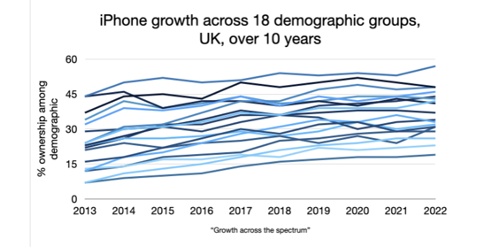Answer: They both had tremendous fame outside of their core audience 👯♂️👯♀️
Prevailing marketing wisdom suggests that we should go after our “core target audiences”.
In fact, isn’t the essence of a data led approach to determine those audiences who are more likely to buy our product in a certain time frame and then cleverly optimise to reach them?
Bravo 🙌 🎉 says the CFO as you create a more efficient targeting methodology.
But what if your real success as a brand laid more in being famous outside of your core category of customers?
That to me is the real definition of ‘fame’. 🏆
Jeremy Bullmore made a wonderful analogy when he said everybody knows Stephen Hawking, yet very few can make any sense of his work. 🤔

It can be argued that for many brands, the role of fame needs to extend way beyond the narrow silos highly targeted segmentation allows.
For instance, take a luxury car like a BMW, it’s real impact is not just the 5% of buyers want the car but also the fact that the other 95% of the market, know that it’s out of reach.

Beyond the pure aspiration, the market expands, new buyers come in and are primed for the car. So they form a core future pipeline for the brand.
This theory is not new. In fact, it’s as old as the book How Brands Grow by Bryon Sharp 😉 but it’s a lesson when we marketers are in the ‘micro’ we often forget.
Another good example is longitudinal sales of the iPhone. Do you know that sales have permeated all segments of each demographic category in the UK?

How was it achieved? Well, actually they stayed one step ahead and opened up one new segment after the other through the years.
They knew the true value of and the real definition of fame in marketing.
It’s a lesson no marketer should ever forget. 🤨


















